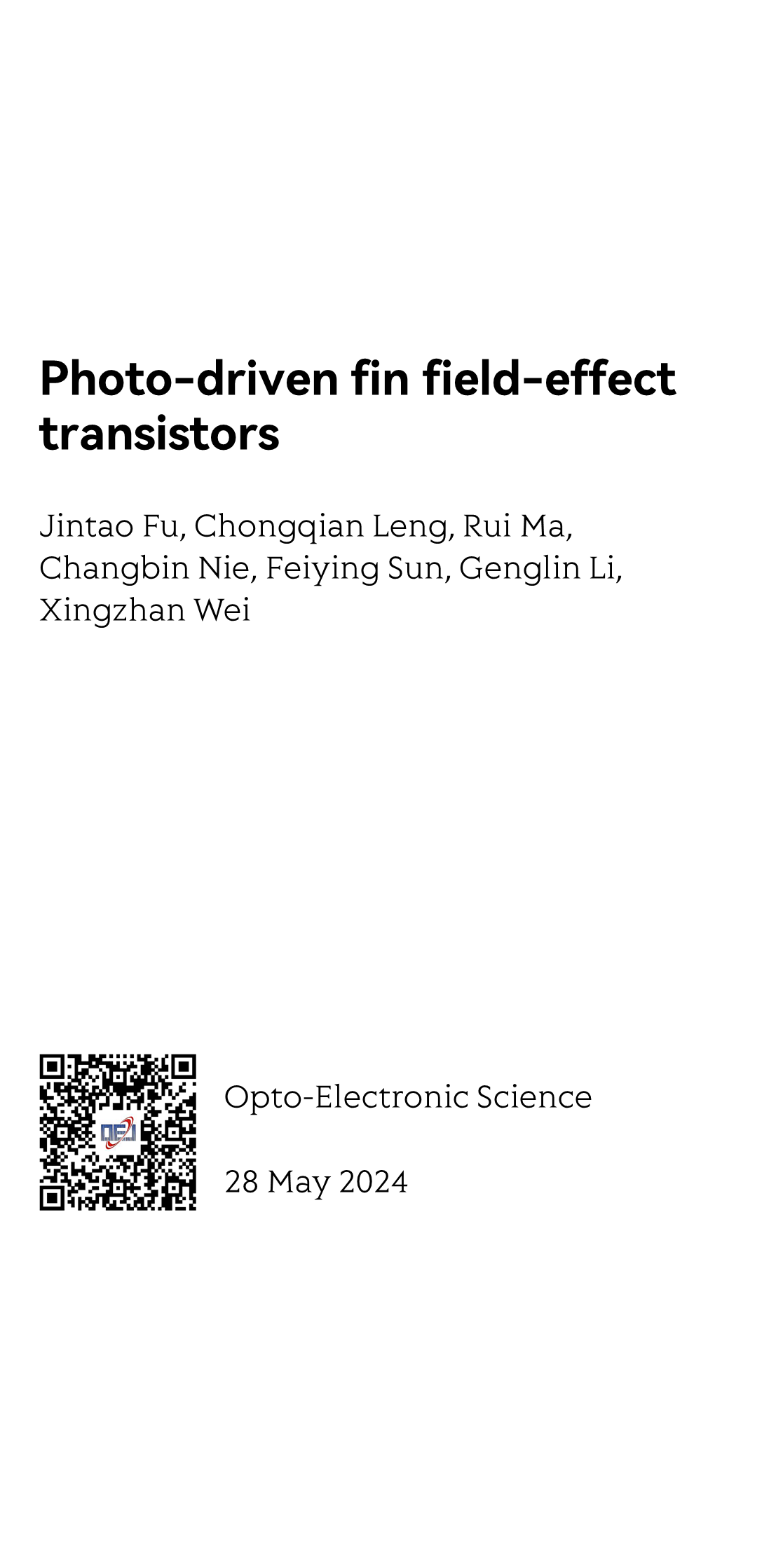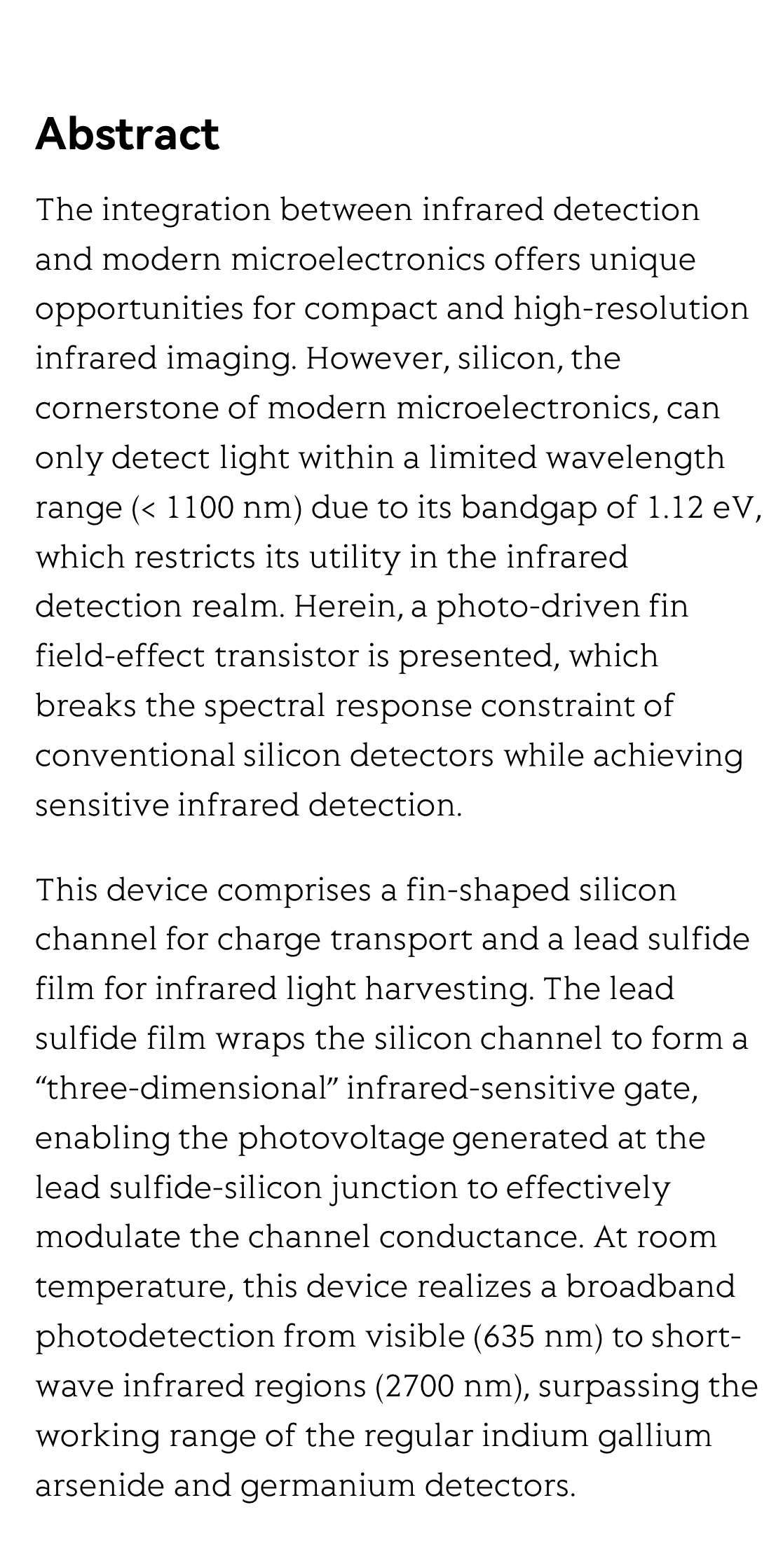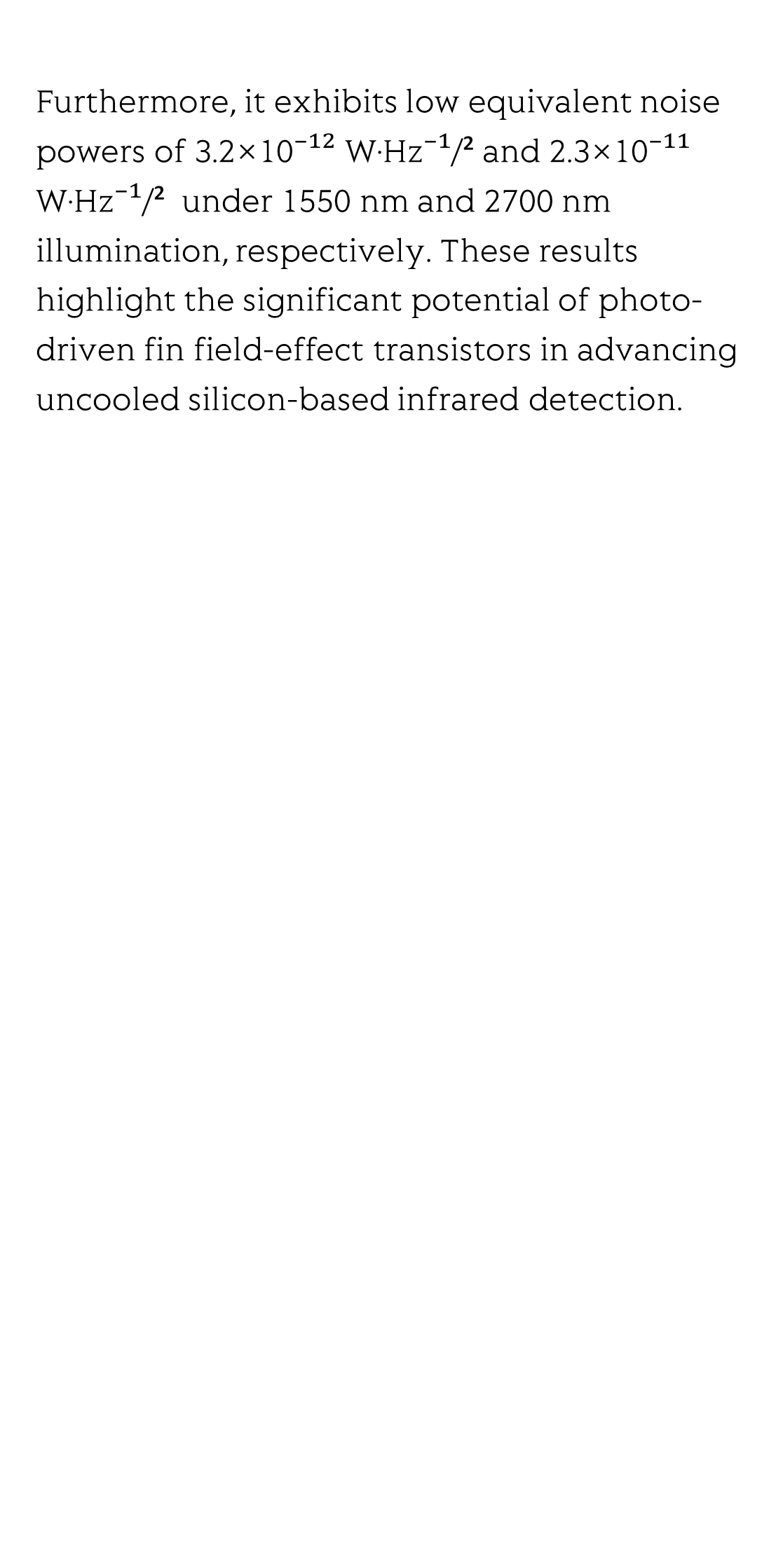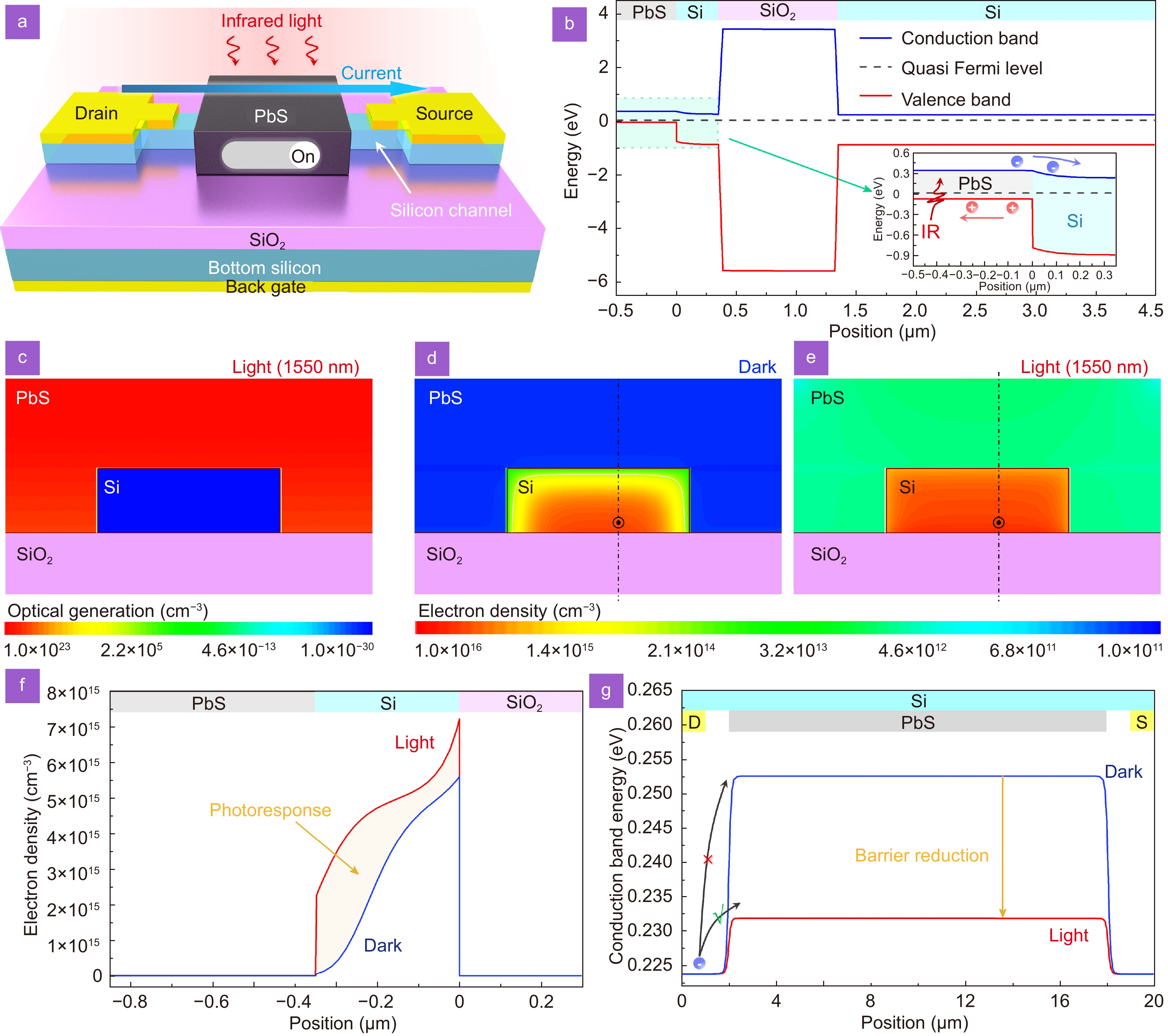(Peer-Reviewed) Photo-driven fin field-effect transistors
Jintao Fu 付津滔 ¹ ², Chongqian Leng 冷重钱 ¹, Rui Ma 马睿 ¹ ³, Changbin Nie 聂长斌 ¹ ², Feiying Sun 孙飞莹 ¹, Genglin Li 李庚霖 ¹ ², Xingzhan Wei 魏兴战 ¹ ² ³
¹ Chongqing Institute of Green and Intelligent Technology, Chinese Academy of Sciences, Chongqing 400714, China
中国 重庆 中国科学院 重庆绿色智能技术研究院
² University of Chinese Academy of Sciences, Beijing 100049, China
中国 北京 中国科学院大学
³ Chongqing School, University of Chinese Academy of Sciences, Chongqing 400714, China
中国 重庆 中国科学院大学重庆学院
Opto-Electronic Science, 2024-05-28
Abstract
The integration between infrared detection and modern microelectronics offers unique opportunities for compact and high-resolution infrared imaging. However, silicon, the cornerstone of modern microelectronics, can only detect light within a limited wavelength range (< 1100 nm) due to its bandgap of 1.12 eV, which restricts its utility in the infrared detection realm. Herein, a photo-driven fin field-effect transistor is presented, which breaks the spectral response constraint of conventional silicon detectors while achieving sensitive infrared detection.
This device comprises a fin-shaped silicon channel for charge transport and a lead sulfide film for infrared light harvesting. The lead sulfide film wraps the silicon channel to form a “three-dimensional” infrared-sensitive gate, enabling the photovoltage generated at the lead sulfide-silicon junction to effectively modulate the channel conductance. At room temperature, this device realizes a broadband photodetection from visible (635 nm) to short-wave infrared regions (2700 nm), surpassing the working range of the regular indium gallium arsenide and germanium detectors.
Furthermore, it exhibits low equivalent noise powers of 3.2×10⁻¹² W·Hz⁻¹/² and 2.3×10⁻¹¹ W·Hz⁻¹/² under 1550 nm and 2700 nm illumination, respectively. These results highlight the significant potential of photo-driven fin field-effect transistors in advancing uncooled silicon-based infrared detection.
Flicker minimization in power-saving displays enabled by measurement of difference in flexoelectric coefficients and displacement-current in positive dielectric anisotropy liquid crystals
Junho Jung, HaYoung Jung, GyuRi Choi, HanByeol Park, Sun-Mi Park, Ki-Sun Kwon, Heui-Seok Jin, Dong-Jin Lee, Hoon Jeong, JeongKi Park, Byeong Koo Kim, Seung Hee Lee, MinSu Kim
Opto-Electronic Advances
2025-09-25
Dual-frequency angular-multiplexed fringe projection profilometry with deep learning: breaking hardware limits for ultra-high-speed 3D imaging
Wenwu Chen, Yifan Liu, Shijie Feng, Wei Yin, Jiaming Qian, Yixuan Li, Hang Zhang, Maciej Trusiak, Malgorzata Kujawinska, Qian Chen, Chao Zuo
Opto-Electronic Advances
2025-09-25







